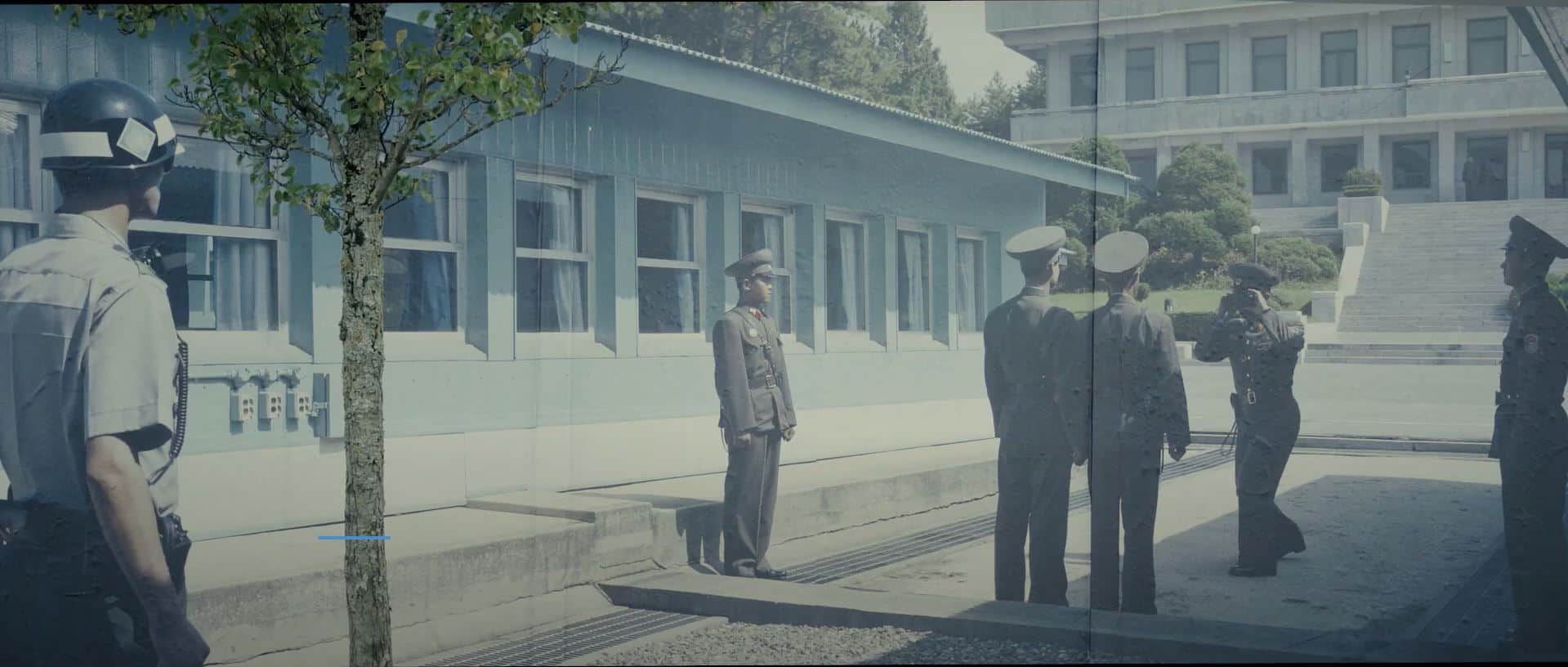Wall To Wall – Belfast Peace Wall – Belfast – Northern Ireland

Updated On: April 18, 2024 by Ahmed Samir
In the heart of Belfast, Northern Ireland, stands a powerful symbol of the city’s turbulent history and ongoing journey towards reconciliation – the Belfast Peace Wall. Stretching for miles across the city, these towering barriers have witnessed decades of conflict and have played a significant role in the region’s quest for peace. This article delves deep into the history, significance, and evolving nature of the Belfast Peace Wall, shedding light on how it continues to shape the social, political, and cultural landscape of Northern Ireland.
Belfast: A City of Resilience and Renaissance
Belfast, the capital city of Northern Ireland, is a place of captivating contrasts. Nestled amidst rolling green hills and surrounded by rugged coastlines, it blends the rich tapestry of its troubled history with a vibrant and forward-looking present. With a heritage that bears the indelible marks of the Troubles, a period of sectarian conflict that spanned decades, Belfast has emerged as a symbol of resilience and reconciliation. Its streets are:
- A testament to the city’s storied past.
- It features iconic landmarks like the Titanic Belfast Museum, which commemorates the ill-fated ship’s construction.
- The historic Crumlin Road Gaol.
Yet, beyond the scars of its history, Belfast is a city of warmth and hospitality, where the lively pub culture, burgeoning culinary scene, and thriving arts and music communities offer a welcoming embrace to visitors and residents alike. With its intriguing blend of history and modernity, Belfast continues to evolve, beckoning all who visit to discover its unique character and embrace its bright future.
Optimal Seasons for Exploring Belfast
The best time to visit Belfast largely depends on your preferences and what you hope to experience. The summer months, from June to August, are generally considered the most pleasant, with milder temperatures, longer daylight hours, and a lively atmosphere. During this time, you can enjoy outdoor festivals, explore the city’s parks and gardens, and take advantage of the more agreeable weather for sightseeing. However, it’s worth noting that these months tend to be the busiest, so accommodations may be in higher demand, and popular attractions may be crowded.
For those seeking a quieter experience with fewer tourists, the shoulder seasons of spring (March to May) and early autumn (September to October) offer a nice balance of pleasant weather and fewer crowds. If you’re interested in experiencing Belfast’s vibrant cultural scene and festivals, check the city’s event calendar, as there are many exciting events throughout the year. Ultimately, the best time to visit Belfast depends on your preferences, but each season has a unique charm.
The Troubled Past
To understand the Belfast Peace Wall’s significance, it is crucial to delve into the tumultuous history that led to its construction. The Troubles, a period of intense sectarian conflict that spanned roughly three decades, from the late 1960s to the late 1990s, pitted nationalist Catholics against unionist Protestants in Northern Ireland. This conflict resulted in over 3,500 deaths and left a profound scar on the region.
During the Troubles, Belfast became a battleground for paramilitary groups on both sides. Sectarian violence was a daily reality, with bombings, shootings, and riots being commonplace occurrences. As tensions escalated, the city saw an increasing need for separation between Catholic nationalist and Protestant unionist communities. The Belfast Peace Wall emerged as a direct response to this volatile situation.
The Construction of the Belfast Peace Wall
Initially constructed in 1969, the Belfast Peace Wall was a physical manifestation of the city’s deep divisions. These barriers, often towering over 20 feet in height, were meant to provide security to the communities on either side. Made of brick, steel, and concrete, they served as a buffer zone, attempting to prevent clashes and protect residents from violence.
The original intention was for these walls to be temporary, a temporary measure to quell the ongoing violence. However, as the Troubles persisted, the Peace Walls grew in number and size. By the early 1990s, there were approximately 40 separate barriers, effectively segregating Catholic and Protestant neighbourhoods.
The Significance of the Belfast Peace Wall
The Belfast Peace Wall holds immense significance both historically and symbolically. It is a stark reminder of the deep-seated divisions that plagued Northern Ireland for decades. The wall is a testament to the physical and psychological separation of communities that lived side by side but remained divided by religious and political beliefs.
- Safety and Separation: The primary function of the Peace Walls was to maintain peace by physically separating communities at odds with each other. They acted as a deterrent to violence, effectively preventing confrontations between Catholic nationalists and Protestant unionists.
- Symbol of Division: The Peace Walls symbolised the deep-rooted divisions in Northern Ireland. They bore witness to the bitterness of the Troubles and the lasting scars it left on the city and its residents.
- Cultural Expression: The Peace Walls have become canvases for street art and political murals. Artists from both sides of the divide have used these barriers to express their views, aspirations, and hopes for a better future.
The Belfast Peace Wall Today
As Northern Ireland has progressed towards peace and reconciliation, the role and future of the Belfast Peace Wall have come under scrutiny. While some have argued that they should be dismantled as a sign of progress and unity, others contend they remain necessary to maintain peace and prevent violence. The reality is more nuanced, as these walls remain integral to Belfast’s evolving landscape.
- Reducing Violence: It is a fact that violence in Belfast has significantly decreased since the height of the Troubles. While the Peace Walls may not be the sole reason for this reduction, they have played a role in maintaining a level of separation that has contributed to peace.
- Tourist Attraction: Paradoxically, the Peace Walls have become a tourist attraction, drawing visitors from around the world keen to learn about Northern Ireland’s history and its path to peace. Guided tours offer a unique opportunity to understand the complex issues that persist in the region.
- Community Opinions: Opinions within communities adjacent to the Peace Walls are mixed. Some residents feel that the walls still provide a sense of security and should remain, while others view them as a constant reminder of the past and would like to see them removed.
Efforts Towards Peace and Reconciliation
Despite the ongoing debates about the Peace Walls, there have been significant efforts towards peace and reconciliation in Northern Ireland. The Good Friday Agreement, signed in 1998, marked a pivotal moment in the region’s history. This agreement, also known as the Belfast Agreement, ended most of the violence and established a devolved government in Northern Ireland.
Additionally, organizations and community groups have worked tirelessly to bridge the divide between Catholic nationalists and Protestant unionists. Programs that foster cross-community relationships, promote dialogue, and address the root causes of conflict have made meaningful contributions to the peace process.
The Future of the Belfast Peace Wall
Whether the Belfast Peace Wall should stay or go remains complex and contentious. Many factors must be considered in determining their future, including the views of the communities directly affected, the potential impact on security, and the broader goal of fostering lasting peace and reconciliation in Northern Ireland.
- Community Consultation: Any decision regarding the Peace Walls should involve extensive consultation with the communities on either side. Their voices and concerns must be central to any plans for change.
- Gradual Reconciliation: While the ultimate goal may be the removal of the Peace Walls, this should be a gradual process that reflects the changing attitudes and relationships within the communities. It should be timely, as premature removal could increase tensions.
- Alternative Solutions: As peace and reconciliation efforts continue, alternative solutions to the physical barriers should be explored. These could include increased investment in community infrastructure, education, and programs to break down the existing psychological obstacles.
Conclusion
The Belfast Peace Wall stands as a testament to the troubled history of Northern Ireland, a history marked by division, violence, and conflict. While it may continue to divide communities physically, it also serves as a powerful reminder of the need for ongoing efforts towards peace and reconciliation. The walls have played a role in reducing violence, but they are not a permanent solution.
The future of the Belfast Peace Wall should be determined through careful consideration of the wishes of the communities it affects, as well as the broader goal of fostering unity and understanding in Northern Ireland. The walls may one day come down as the region heals from its turbulent past. Still, the legacy of their existence will forever shape the journey towards a more peaceful and united Northern Ireland.
FAQs
What efforts have been made towards peace and reconciliation in Northern Ireland?
Significant efforts have been made towards peace and reconciliation in Northern Ireland, including the Good Friday Agreement in 1998, which ended most of the violence and established a devolved government. Various community programs also aim to foster cross-community relationships and dialogue.
Can you recommend any specific festivals or events in Belfast that visitors should consider attending?
Some notable festivals and events in Belfast include the Belfast International Arts Festival, the Cathedral Quarter Arts Festival, and St. Patrick’s Day celebrations. These offer unique opportunities to experience the city’s cultural vibrancy.
What should visitors expect when exploring Belfast, and what are some must-see attractions?
Visitors can expect a city with a complex history, warm hospitality, and a mix of historical and modern attractions. Must-see attractions include Titanic Belfast, the political murals, Queen’s University, and the vibrant St. George’s Market.






